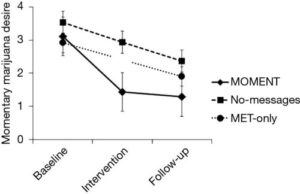If you are a researcher involved in digital health or using ecological momentary assessment or intervention methodologies, then I want to show you how to successfully run your grant-funded study on time and on budget without hiring a developer.
We’ve helped hundreds of researchers over the past ten years to do just that.
Some Examples of our Work
Suicide Ideation Phenotyping
This study was done by a group at Harvard Medical School and was published in the journal “Anxiety and Depression” in April 2018. It was led by Evan Kleiman who is now an Assistant Professor at Rutgers University.
Before this study was done suicidal thinking had always been studied as a homogeneous construct – which was only due to the methodologies available. They only allowed for snapshot assessments to be taken days, weeks or months apart missing the variation in suicidal thoughts that happens through the course of a single day. So our understanding of suicidal ideation and its relationship to the act of suicide was blunted by the available methodologies.
This group used the mEMA System which allowed them the opportunity for “digital phenotyping” – real-time characterization and quantification of human thought in situ. The research team used the mEMA app to ask the same four questions of their participants multiple times throughout the day for 28 days each.
They found that instead of suicide ideation being a homogenous construct there were actually five previously unknown distinct phenotypes of suicidal thought. Each phenotype differed in terms of intensity and variability. They also found a significant relationship between having more severe and persistent suicidal thoughts and a recent suicide attempt.
This work has opened up new avenues in the understanding of suicide and it’s prevention that were previously unavailable.

Ecological Momentary Intervention for Marijuana Use
This study was done by a group at Boston Children’s Hospital and was published in the journal “mHealth” in 2018. It was led by Lydia Shrier (MD, MPH) who is an attending physician at Boston Children’s.
This group developed a motivational counseling intervention that they had previously found to be effective in reducing marijuana use among adolescents. They wondered if they could make it more effective by adding an ecological momentary intervention component.
The researchers used the mEMA System to provide personalized motivational messages to patients throughout their day – after asking them questions about who they were with, what they were doing and how they were feeling. The messages were tailored to the individual based on the counselors’ in-person interactions with the patients and additionally tailored to the moment based on how they answered questions at each survey instance throughout the day.
They found that patients in both the motivational counseling condition (MET) and the EMI assisted (MOMENT) condition showed both lower marijuana use and desire to use at the end of the study. Furthermore, they found that the desire to use marijuana in the moment during targeted contexts (such as hanging out with friends) decreased even more in the EMI assisted condition. They found their patients enjoyed using the app and reading the intervention messages.
This work opens the door to increasing the efficacy of substance abuse treatment programs in our adolescents – a highly vulnerable population.

Dynamics of Prescription Opioid Use
This study was done by a group at Johns Hopkins University and was published in the “Journal of Pain” in January 2018. It was led by Patrick Finan who is an Assistant Professor at Johns Hopkins.
They worked with people who have Sickle Cell Disease- a chronically painful condition often treated with opioids. Opioid prescriptions of course come with the risk of addiction and abuse but very little was previously understood about how patients make decisions about which prescription opioids to take and when.
The researchers used the mEMA System to provide patients with a daily diary questionnaire each evening. They asked about which opioids they had taken that day – short or long-acting, how they were feeling and probed some of their thought patterns around the pain they were experiencing.
They found that higher levels of pain and of catastrophizing about their pain led to greater use of short-acting opioids. Whereas negative affect led to more use of long-acting opioids. They also found that catastrophizing about their pain led patients to use more opioids even when pain levels were relatively low.
So they were able to shed light on the momentary cognitive and affective dynamics underlying prescription opioid use behaviors that had previously been hidden from view by outdated methodologies.
None of these groups hired a developer and they all delivered their grant funded studies on time and on budget.

